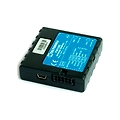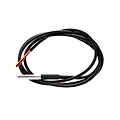


Exploring Temperature GPS Tracking Devices
Temperature GPS tracking devices have become essential for industries that require precise environmental monitoring during transportation or storage. These devices play a critical role in maintaining the quality of temperature-sensitive goods, reducing waste, and ensuring compliance with regulations. This blog explores the functionality, features, benefits, and applications of temperature GPS tracking devices.
A temperature GPS tracking device is a technology that combines location tracking with temperature monitoring. It is designed to track the real-time location of assets while continuously measuring environmental conditions like temperature and humidity. These devices are vital for sectors handling goods that must be stored or transported under controlled conditions, such as perishable foods and pharmaceuticals.
These devices function through an integration of several components:
GPS Module: Captures and transmits real-time location data to a centralized system.
Temperature Sensor: Continuously measures the ambient temperature or product-specific conditions.
Data Logger: Records temperature data and location history for analysis and compliance.
Connectivity Module: Uses cellular, Wi-Fi, or satellite networks to send data to a cloud-based monitoring platform.
Monitoring Software: Provides real-time access to data through dashboards, alerts, and reports.
This combination allows users to monitor both the location and environmental status of their assets in real-time.
Real-Time Location Updates: Ensures accurate tracking of asset locations.
Temperature Monitoring: Tracks temperature fluctuations to ensure they remain within acceptable ranges.
Custom Alerts: Notifies users of temperature deviations, tampering, or route changes.
Multi-Parameter Monitoring: Can track additional conditions such as humidity, shock, and light exposure.
Detailed Reporting: Generates reports for regulatory compliance and operational analysis.
Long Battery Life: Designed for extended use during lengthy transit periods.
Maintaining Product Integrity: Ensures goods are stored and transported under ideal conditions, reducing spoilage.
Operational Efficiency: Provides data to optimize routes and minimize delays.
Regulatory Compliance: Helps businesses meet industry standards for handling sensitive products.
Cost Savings: Prevents financial losses by identifying and addressing issues in real-time.
Customer Satisfaction: Ensures products are delivered in excellent condition, enhancing trust.
Sustainability: Reduces waste by ensuring better handling of perishable goods.
Pharmaceuticals: Monitors the temperature of vaccines, medications, and medical samples.
Food and Beverage: Ensures perishables like dairy and seafood are transported safely.
Logistics and Warehousing: Tracks conditions during storage and long-distance transportation.
Cold Storage: Maintains the required temperature for stored goods.
Agriculture: Monitors the temperature of harvested produce during storage and transport.
Chemical Transport: Ensures safety and compliance during the movement of sensitive chemicals.
When selecting a device, consider the following factors:
Measurement Accuracy: Ensure the device provides reliable readings.
Connectivity Options: Choose based on the networks available in your area.
Battery Performance: Opt for devices with long battery life to avoid interruptions.
Durability: Select a device that can endure extreme conditions.
Ease of Integration: Ensure it can be easily incorporated into your existing systems.
Scalability: Look for a solution that can adapt to growing needs.
Temperature GPS tracking devices are vital for businesses handling temperature-sensitive goods. They provide the tools necessary for real-time tracking, ensuring goods are kept in optimal conditions throughout the supply chain. By investing in these devices, companies can improve efficiency, enhance customer satisfaction, and achieve sustainable practices. As technology evolves, these devices will become even more versatile, making them an indispensable part of modern logistics and asset management.